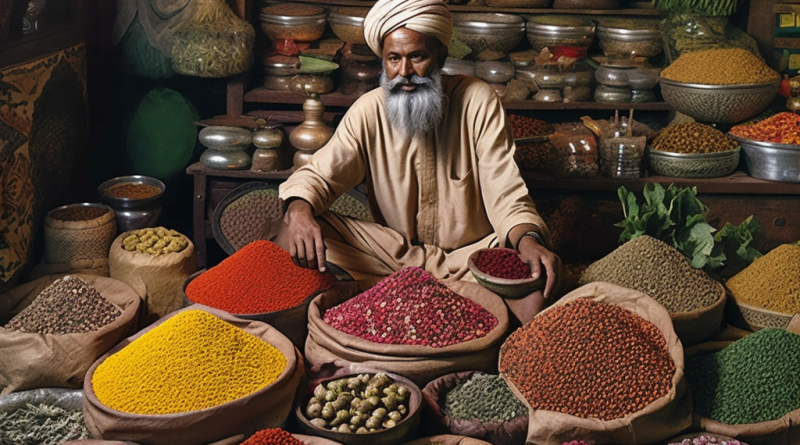Exploring Nature’s Pharmacy: The Healing Properties of Herbal Remedies
Herbal remedies have been used for thousands of years to provide relief from physical, mental, and emotional ailments. In recent years, herbal remedies have become increasingly popular as people look for more natural options to heal their bodies. This article will explore the history, benefits, and types of herbal remedies, as well as how to identify, prepare, store, and use them.
Herbal remedies have a long history of use in all the world’s major healing systems. Ancient civilizations in Europe, Asia, and the Americas all had their own healing traditions which used herbs to treat a wide variety of ailments. We will explore some of the most popular traditional healing systems and the herbs they used.
We’ll also discuss some of the most popular and well-known herbal remedies, their uses, and potential side effects. We’ll also discuss how to identify and store herbal remedies safely and how to make your own herbal remedies at home. Finally, we’ll review the overall benefits of herbal remedies and discuss how to use them safely and effectively.
Post Content
History of Herbal Remedies
Herbal remedies have been around for centuries. Ancient civilizations such as the Chinese and Egyptians have used herbs for medicinal purposes for thousands of years. Chinese herbal medicine treated illnesses with herbs and this practice was passed down through generations to modern times. Similarly, Ancient Egyptians used herbs for a variety of ailments, including snake bites and skin rashes.
Herbalism is also a major part of Traditional Chinese Medicine and has been for centuries. This practice focuses on the use of plants and herbs to treat illnesses, as well as to promote overall well-being. Similarly, Ayurvedic Medicine, which originated in India, has been using herbs for healing and promoting health since ancient times. This practice focuses on treating the individual as a whole and believes that the body has natural healing powers.
Popular Herbal Remedies
Herbal remedies have been used for centuries to treat a variety of ailments and diseases. Many of these remedies have stood the test of time and are still used today. Popular herbal remedies include Echinacea for colds and flu, St. John’s Wort for depression, and Chamomile for sleep.
Echinacea has been used for centuries to treat colds and flu. It contains active compounds that reduce inflammation and boost the immune system which helps fight off infection. It also helps reduce the severity and duration of colds and flu. St. John’s Wort is a popular herbal treatment for depression. It contains active compounds that help regulate mood, reduce stress, and improve overall mental health. Lastly, Chamomile is a popular herbal remedy for aiding in sleep. It contains active compounds that reduce anxiety and promote relaxation.
How to Identify Herbal Remedies
Herbal remedies can be difficult to identify, as many plants look similar. It’s important to be able to differentiate between herbs and other plants to ensure a safe and effective remedy. With some practice and basic knowledge, it is possible to identify herbal remedies with pictures or a written description.
When looking at herbal remedies, it’s important to consider where the herbs have come from. It’s best to buy from a reputable source and look for herbs that have been certified as organic. Once you have a safe source of herbs, you can begin to identify them. To do so, it’s important to learn how to differentiate herbs from plants. Herbs are usually characterized by their medicinal properties, whereas plants are generally recognized by their beauty or color. Once you’ve identified an herb, you can use pictures or a written description to distinguish it from other herbs.
Common Side Effects & Interactions
Although herbal remedies are generally considered safe, they can sometimes produce side effects like nausea, indigestion, or headaches. These side effects are generally mild and can be alleviated by reducing the dosage. Some herbs, such as St. John’s Wort, can also interact with certain drugs, so it is important to consult a doctor before taking any herbal remedies.
Herbal remedies can also interact with other herbs. For example, ephedra and ma huang can cause high blood pressure when taken at the same time. It is important to research the potential interactions between any herbal remedies and medications you may be taking. When choosing a dosage, it is best to start with the lowest possible amount and work up from there if necessary.
Home Remedies
Creating homemade herbal remedies is a cost-effective way to enjoy the health advantages of natural ingredients. You can find many herbal remedy recipes online and customize them to your needs through research. Popular DIY recipes include soothing chamomile tea, peppermint and ginger tea for upset stomachs, and an infusion of honey and lemon to help soothe sore throats. When it comes to ingredients, make sure you are using fresh, organic herbs to make the most of the healing properties.
When it comes to dosage, it is important to follow the instructions carefully. Know the effects and risks of herbs before using them to avoid harmful interactions with other medications. If you are unsure, consult your healthcare provider for advice.
How to Store Herbal Remedies
Proper storage of herbal remedies is an important part of maintaining their quality and effectiveness. Dried herbs should be stored in an airtight container in a cool, dark place away from direct sunlight, such as a pantry or cabinet. For fresh herbs, keep them in a cool place and store them in a jar with a lid for added protection from moisture.
When it comes to long-term storage, it’s best to freeze fresh herbs in a vacuum-sealed pouch or container. This will ensure they are kept fresh for up to a year. For dried herbs, it’s best to keep them in an airtight container and store in a cool, dry place.
When using herbal remedies, it’s important to consider the storage methods in order to ensure they are fresh and effective. This will help you get the most out of your herbal remedies and keep them working at their best.
Conclusion
Herbal remedies have been used for centuries to treat various ailments and offer a safe and natural alternative to traditional medicine. Different cultures have used herbs in different ways for a long time, and now modern science is discovering that these plants, including those found in the Balance of Nature supplement, have medicinal properties.
From echinacea to chamomile, there is an array of herbs that can be used to improve overall health and wellness. Learn how to identify, dose, and store herbal remedies to safely benefit from their healing properties. With careful consideration and diligent research, anyone can benefit from the herbal remedies found in nature’s pharmacy.




